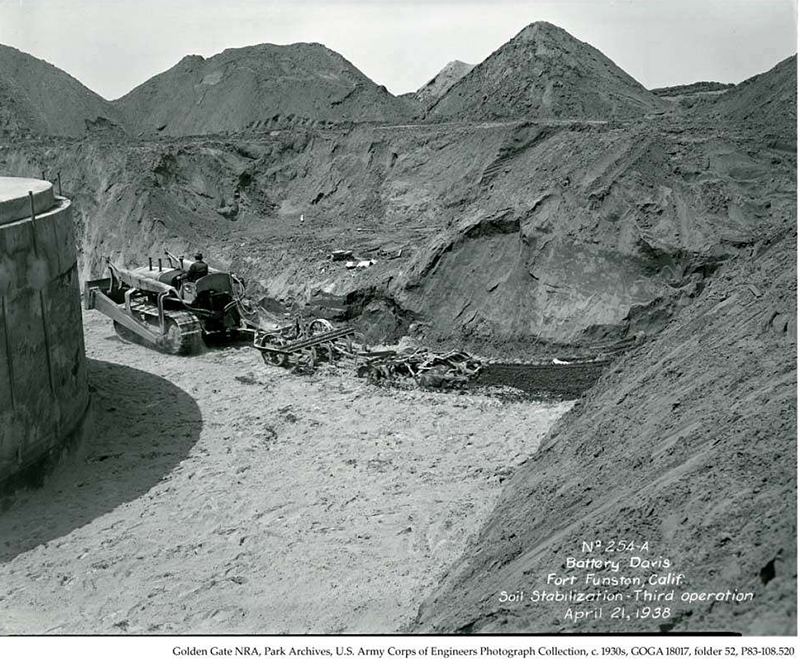
The remedial practice of soil stabilisation has been widely employed in the construction and building sectors for thousands of years, and even after more than two millennia, it remains just as relevant as ever. Early examples can be traced back to Mesopotamia and Ancient Egypt – who are considered to be pioneers of this technique – before being expanded upon by the Greeks and Romans to create passageways through the most challenging environments. Many sections of our present-day roads were constructed using this very technique as their foundation. Of course, we’ve seen some developments in soil stabilisation since these ancient civilisations, but the premise of the practice remains the same, and its importance remains just as relevant today as ever. For any construction project, the soil is the foundation of its entire structure, whether it’s property building, following the Romans in road building and maintenance, or pretty much anything else! John Rodgman, managing director of the geotechnical drilling company Borehole Solutions, shares his insights.
The three main forms of soil stabilisation
This remediatory process involves the addition of various stabilising agents to the soil to enhance its strength and load-bearing capacity, whilst reducing its susceptibility to erosion and weathering. Today, soil stabilisation can be broken down into three main categories.
Biological stabilisation
Otherwise referred to as forestation, the primary application of this stabilisation category is in regions where the soil is particularly susceptible to weather-related damage. Typically, biological soil stabilisation entails the planting of trees, seedlings, and plants in barren areas with the overarching goal of controlling erosion. Whilst this technique does look to be an entirely natural remediatory process, it is essential to supplement it with other stabilisation forms during the initial stages of plant growth. Without these measures, the organic material faces a significant risk of stunted development, or even being swept away by powerful winds and water currents.
Physical stabilisation
This technique alters the size and inherent properties of soil particles to enhance the grading and strength of an area. Physical stabilisation comprises five primary techniques:
1. Compaction: The removal of air voids within the soil to enhance its load-bearing capacity.
2. Pre-wetting: Creating a moisture-rich environment for the soil to absorb water, swell, and establish a consistently maintained soil heave that is not detrimental.
3. Soil reinforcement: Strengthening weak soil by incorporating interlocking fibrous materials to improve its stability.
4. Wetting dry cycles: Repeatedly saturating the soil with water until it swells, followed by drying it back to its original moisture content, ultimately reaching an equilibrium state.
5. Solid wastes: Adding municipal waste such as plastic, glass powder, e-waste, plant waste, and other materials to the soil.
Chemical stabilisation
In contrast to other soil stabilisation methods, this method relies more heavily on the use of chemicals, as implied by its name. Stabilisers like lime, fly-ash and cement are introduced to soil particles to enhance the overall durability of the area. When exposed to water, a chemical reaction takes place, transforming the area, fortifying it, and making it more resilient even against severe weather conditions. The effectiveness of this process, however, depends on the specific chemical reaction that occurs, so it is crucial to select the appropriate stabilisers that correspond to the soil type to achieve optimal results.
How soil stabilisation can benefit a project’s durability and longevity
The use of appropriate materials for soil stabilisation plays a vital role in enhancing its strength and load-bearing capacity. This consideration becomes especially crucial for projects involving heavy structures like buildings, bridges, and highways. Improving the soil’s ability to withstand applied loads, significantly reduces the likelihood of settlement and structural failures over time. Neglecting proper reinforcement of the soil can result in unevenness and deformities within the project’s foundations, compromising its long-term stability.
Moreover, soil stabilisation techniques prove particularly beneficial in improving the durability of projects in challenging environmental conditions. In regions with strong winds or high groundwater levels, for instance, stabilising the soil helps prevent excessive seepage while preserving the project’s structural integrity. Likewise, in areas prone to freeze-thaw cycles, soil stabilisation minimises the risk of frost heave and its associated damage to foundations, pavements, and other structures.
Cost-saving applications
Soil stabilisation techniques offer significant potential for cost savings throughout the lifecycle of a project. By improving the relevant soil properties and proactively addressing challenges at an early stage, the need for expensive and time-consuming remedial measures can be greatly reduced or even eliminated in the long term.
Rather than resorting to costly alternatives such as importing and placing large quantities of aggregates or fill material, soil stabilisation allows for the utilisation of locally available soils. By treating and modifying existing soil, it becomes suitable for construction purposes, thereby reducing the requirement for additional materials and their associated expenses.
Furthermore, soil stabilisation enhances the long-term durability of the project, leading to a reduced frequency of maintenance and repair work. The treated soil becomes more resistant to settling, erosion, and other damaging effects. As a result, fewer ongoing maintenance costs are incurred, and the potential costs of dealing with serious structural failures are minimised, ensuring significant savings over time.











